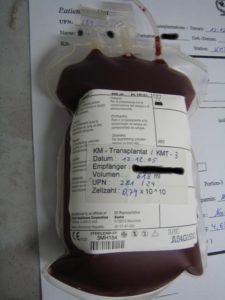
Recently Diagnosed or Relapsed? Stop Looking For a Miracle Cure, and Use Evidence-Based Therapies To Enhance Your Treatment and Prolong Your Remission
Multiple Myeloma an incurable disease, but I have spent the last 25 years in remission using a blend of conventional oncology and evidence-based nutrition, supplementation, and lifestyle therapies from peer-reviewed studies that your oncologist probably hasn't told you about.
Click the orange button to the right to learn more about what you can start doing today.
- You are here:
- Home »
- Blog »
- Multiple Myeloma »
- Myeloma Diagnosis- ASCT vs. Novel Therapies?
Myeloma Diagnosis- ASCT vs. Novel Therapies?

“However, therapies such as new immunomodulatory drugs and proteasome inhibitors and, more recently, monoclonal antibodies and chimeric antigen receptor T cells are challenging the traditional role of ASCT.”
Hi David- I just discovered your site, and am brought up kind of short. My wife (six years into MM diagnosis, has just had ASCT, seems to be doing extremely well, we think because of her integrative (acupuncture, homeopathy, IVC, etc) approach.
But this—“Countless studies document novel therapies providing as long an overall survival as ASCT with less toxicity and therefore reduced risk of short, long-term and late stage side effects.”
—Could you point me to this research and these therapies? Thank you. MM Caregiver
Hi MM Caregiver-
- ASCT has been the standard-of-care for newly diagnosed MM patients without ever conclusively proving a longer “overall survival.” OS is length of life. Progression-free survival (PFS) is the term for the MM survivors length of first remission.
- To your question, the study then highlights concepts like fewer side effects, higher response rates, and overall response rates. The study questions the fact that ASCT may not be the best therapy option for all newly diagnosed MM patients without saying it specifically.
- I would also plug frequent, moderate exercise
- Anti-MM nutrition
- Anti-MM nutritional supplementation such as curcumin, resveratrol, etc.
- MM Survivor
- MM Cancer Coach
- Director PeopleBeatingCancer
Recommended Reading:
Are Autologous Stem Cell Transplants Still Required to Treat Myeloma in the Era of Novel Therapies?
However, results for OS were inconsistent, and over time, the use of tandem ASCT declined.
In parallel, numerous new therapeutic options have been discovered, starting with the immunomodulatory drugs (IMiDs) and proteasome inhibitors (PIs) (Figure 1). Thalidomide, the original IMiD [14], was replaced by lenalidomide and pomalidomide, more potent agents that are less likely to cause neuropathy. The current focus is on agents such as iberdomide, which appears to have some efficacy in patients who are refractory to all other IMiDs.
Proteasome inhibitors have also improved both the response rates and the corresponding depths of response..”
Cancer prehabilitation: One step toward improved outcomes
“Oncology nurses are critical to the delivery of high-quality cancer care and, as such, they are frequently introduced to patients immediately following a diagnosis. Indeed, nurses often spend more time with survivors with newly diagnosed cancer than any other health care professional. This early access provides a perfect opportunity for them to not only provide education and moral support, but also administer assessments to determine how cancer prehabilitation could be used to improve patients’ health outcomes.
The future of high-quality cancer treatment will increasingly focus on patient-centered care, supported by a strong evidence base and highly skilled providers. Nurses, particularly navigators, are uniquely positioned to deliver efficacious prehabilitation services.
With this unique opportunity comes the responsibility to understand the evidence-based research and incorporate it into a best practices clinical approach to improving cancer care. Because research in this area of medicine is rapidly evolving, nurses should consider pursuing formal training and continuing education in cancer prehabilitation and collaborate more closely with rehabilitation health care professionals…”


